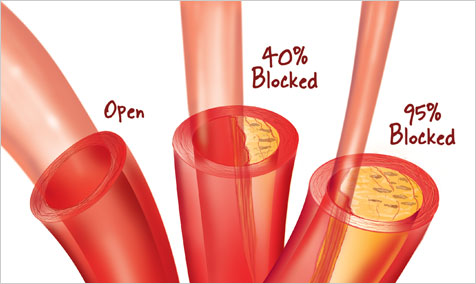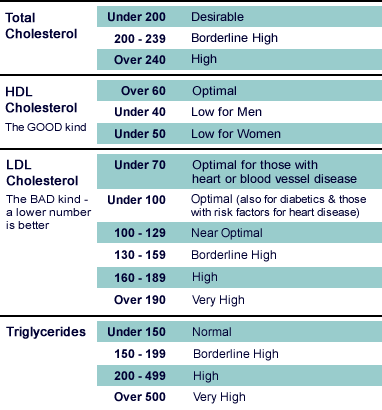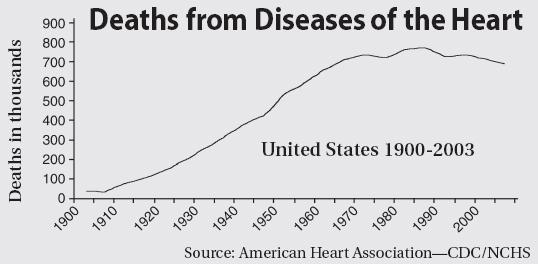It’s often made out to be the bad guy in today’s medical world. But cholesterol is an important molecule in the body. With the right diet and exercise program, you can put the power of cholesterol to work for you. No appointments to see your doc required.
What is high cholesterol?
Do you have a liver? Then you produce cholesterol.
Our liver produces anywhere from 1-2 grams of cholesterol per day. Production can decrease when we eat cholesterol-rich foods and increase when we eat foods without cholesterol.
Cholesterol’s name comes from the Greek words kholē, or bile (since it was first isolated from gallstones), and stereos, or solid, which indicates that it’s part of a class of molecules that are known collectively as sterols. (The term “steroids” comes from this common root.)
Cholesterol is necessary to produce vitamin D, steroid hormones, and bile acids. It’s also a component of cell membranes.

Lipoproteins
Cholesterol is fatty and doesn’t mix well with blood, so it travels in our blood via a protein “wrapper” known as a lipoprotein (the prefix “lipo” is similar to “lipid”, and both come from the Greek lipos, meaning fat).
We often hear about HDL and LDL cholesterol — these actually aren’t “cholesterols” per se but rather the protein “wrappers” that transport the cholesterol.
HDL, aka high-density lipoprotein, aka “good cholesterol”, mops up excess cholesterol and brings it to the liver for disposal.
LDL, aka low-density lipoprotein, aka “bad cholesterol”, also has an important job: it transports cholesterol and fat from the liver to the rest of the body.
LDL’s bad rep occurs because it’s also the main ingredient in vessel plaque. LDL cholesterol seems to be the most problematic when it comes to heart and vessel health, as it’s fragile and susceptible to oxidation. Oxidation is bad news.
Another lipoprotein, called Lp(a), can help restore damaged blood vessels in a healthy body. But some people have too much Lp(a), and it can concentrate at the damaged artery sites, leading to plaque buildup.

Why is high cholesterol so important?
There appears to be an association between elevated cholesterol and risk of premature death from cardiovascular disease.
210 mg/dl is the average cholesterol level for those in developed countries. This level predicts a 50% chance of premature death due to atherosclerosis. Bummer.
Going from 200 mg/dl to 260 mg/dl bumps up chance of death by 500%. The Framingham study showed that no one has died of cardiovascular disease while having a cholesterol level below 150 mg/dl.

Just getting blood cholesterol right under 200 mg/dl might not be enough. 35% of heart attacks that occurred in the Framingham study were in those with “normal” cholesterol, between 151 mg/dl and 200 mg/dl.
Some have argued that the association between cholesterol and cardiovascular disease, part of a theory of heart disease known as the lipid hypothesis, is minimal at best.
Still, other experts have stated that maintaining a low cholesterol level (less than 150 mg/dL) can protect us against cardiovascular disease.
“Regularly maintaining a cholesterol level of less than 150 mg/dl makes one practically heart attack proof and insures against further progression of the disease.”
–Dr. Caldwell Esselstyn“Heart disease is virtually unknown in regions where cholesterol is under 150.”
–Dr. T. Colin Campbell“Only a cholesterol level below 150 is satisfactory.”
–Dr. Joel Fuhrman“We’ve never had a heart attack in Framingham in 35 years in anyone who had a cholesterol level under 150…Three-quarters of the people who live on the face of this Earth never have a heart attack. They live in Asia, Africa, and South America, and their cholesterols are all around 150.”
–Dr. William Castelli“Heart disease is almost non-existent in places where blood cholesterol is very low. If your cholesterol is around 160 mg/dl or less, your risk of heart disease is virtually zero.”
–Dr. Terry Shintani
Gosh, it seems like lower is always better. Not so fast.
Some data indicate that low cholesterol levels are associated with depression and cerebral hemorrhage.
And consider the Greek island of Crete. Not a single heart attack was registered among a half million people during a ten year study period. Yet, the average citizen of Crete has a cholesterol level above 200. This might be due to the protective effect of unprocessed fats (think Mediterranean diet).
While cholesterol seems to play an important role in cardiovascular disease, it’s definitely not the only factor involved.

So what’s the point of cholesterol?
Cholesterol has a number of important metabolic functions, as described above.
A higher cholesterol intake might be associated with greater muscle growth.
Why? Well, cholesterol is the precursor to important anabolic hormones that are related to muscle growth/repair.
Cholesterol is also the basis for other reproductive hormones such as other androgens and estrogens. (Short version: no cholesterol, no sex hormones.)
Cholesterol is an essential component of biological membranes and helps to increase membrane viscosity, which increases the exposure of membrane proteins to compounds coming in from outside the cell.
What you should know about high cholesterol
1 in 3 North Americans has high cholesterol and 200 million prescriptions for cholesterol lowering drugs were written in 2008.
We know that cholesterol levels can be managed by nearly everyone via nutrition and lifestyle modifications, so why do millions use cholesterol lowering drugs? Because it takes work to control cholesterol.
And perhaps because the production and sale of statin drugs is one of the most lucrative pharmaceutical markets. Statin drugs are one of the top two selling drug classes in the US. (The other is drugs to combat gastro-esophageal reflux disease, or GERD.) With the exception of generic lovastatin (about $30/month), depending on the type of statin, consumers can pay $70-150 per month for a prescription… often for life.
(Statins and reflux drugs… kind of makes you think, doesn’t it?)
What type of decrease in LDL can we expect from our diet?
| Type of eating style | % decrease in LDL cholesterol |
|---|---|
| American Heart Association Standard Guidelines | 6% |
| Atkins Style (higher protein and fat) | No significant changes |
| Lower fat, plant-based, still including dairy and eggs | 16% |
| Mediterranean | No significant changes |
| Statin drugs | 26% |
| 100% plant-based diet, well planned, with nutrient dense foods | 33% |
Some nutrition/lifestyle data have indicated a 40% drop in LDL over the course of one year. So, if your LDL is 150 mg/dl and you incorporate the recommendations in this article, one year from today, your LDL could be 90 mg/dl.
Take that, statins.
How to control blood cholesterol
Let’s outline what we can do to control blood cholesterol.
#1: Get and stay lean
The eyeball test is sufficient here – if someone looks fat, they are fat.
Gaining bodyfat will likely increase blood cholesterol. If body fat decreases, cholesterol will too.
#2: Eat at least 10 servings of vegetables and fruits each day
There are countless substances in food that have cholesterol lowering properties. Many are found in vegetables and fruits.
If you really want to make a dent in your cholesterol, aim for about 90% of your food intake each day to be from vegetables, fruits, beans, whole grains and nuts/seeds.
#3: Eat at least 1 cup of whole grains each day
Eating whole grain foods is associated with a 15 to 25% reduction in premature death from all causes. In fact, researchers found that those who ate 6 or more servings of whole grains a week had less plaque in their arteries that those who ate whole grains less often. Eating 3 or more serving of whole grains each day means a 30% lower risk of atherosclerotic disease.
We speak only of WHOLE grains; processed carbs will cause your HDL to take a nose dive.
#4: Eat at least 1 cup of legumes each day
Legumes are fiber rich. Fiber binds to cholesterol in the digestive tract. Take that, bile acid sequestrants.
#5: Eat at least 1/3 cup of nuts/seeds each day
Clearly, you’d want raw instead of the sugared/roasted variety. These nutrition powerhouses are seriously cholesterol lowering.
#6: Eat/supplement with omega-3s (algae or fish oils)
Foods and supplements with omega-3 fats have been reported in several large clinical studies to reduce LDL levels.
#7: Exercise at least 5 hours per week
Sweat for at least 5 hours each week. Mix it up between resistance training, conditioning, and flexibility.
This is one of the few ways to boost HDL.
#8: Eat plenty of herbs and spices
This includes ginger, garlic, and curcumin. Ginger can increase circulation and curcumin can block cholesterol uptake in the gut.
Even cocoa can help. Flavonoid rich chocolate can decrease LDL, increase HDL, and reduce platelet stickiness. See All About Chocolate for more.
#9: Limit meat, processed foods, trans fats and dairy
Lots of meat and trans fat seem to be a bad deal for blood cholesterol. Some grass-fed, organic type of meat is fine, but if the factory raised stuff is the foundation of your diet, you may run into cholesterol issues. For trans fat, processed foods and dairy – aim for as little as possible to maximize your cholesterol control.
#10: Drink at least 4 cups of tea each day
Tea can help to lower blood cholesterol, reduce arterial plaque, improve blood vessel function, and decrease lipid oxidation. If you drink coffee or soda, aim for the lower caffeine varieties. Caffeine can increase cholesterol levels by nearly 10%.
Finally, if you don’t drink alcohol, don’t start. If you do, only use it in small amounts, see All About Alcohol for more.
A note on supplements
With all supplements, don’t run out to the vitamin store and fill your pockets. Chat with your doc first and consider what you really need.
- Red rice yeast extract – This stuff actually contains the same ingredient found in statin drugs. This should be taken under your doctor’s supervision – powerful stuff. 600 to 1200 mg twice a day with food.
- Omega-3 oils – Anti-inflammatory and anti-clotting. They can also help to convert small dense LDL particles into larger buoyant versions. That’s a good thing. 1 to 4 grams a day.
- Niacin (vitamin B3) – This can increase HDL while decreasing LDL and Lp(a). Watch out for niacin-induced flushing, which is the result of vasodilatation. Decrease the flushing by taking the niacin with food or a small dose of aspirin. Too much B3 can cause liver stress and toxicity. 500 to 2000 mg daily with food.
- L-carnitine – This stuff can help to control Lp(a). 1 gram twice per day can be helpful.
- Plant sterols/stanols –These are found naturally in many plant foods and can trap dietary cholesterol in the gut, so it’s best to consume them with meals. We get approximately 200-500 mg of sterols and 20-60 mg of stanols in the average diet. Many foods are now being fortified with them (e.g., orange juice, margarine, etc.). 2 grams of sterols/stanols per day might be effective.
A note about dietary cholesterol
Dietary cholesterol has minimal impact on blood cholesterol for most individuals. In general, eggs don’t seem to have a negative effect on blood cholesterol measures. Omega-3 eggs might even have a beneficial effect since they improve key blood proteins and decrease blood glucose.
Summary and recommendations
- Get and stay lean
- Eat at least 10 servings of vegetables and fruits each day
- Eat at least 1 cup of whole grains each day
- Eat at least 1 cup of legumes each day
- Eat at least 1/3 cup of nuts/seeds each day
- Eat/supplement with omega-3’s (algae or fish oils)
- Exercise at least 5 hours per week
- Eat plenty of herbs and spices
- Limit meat, processed foods, trans fats and dairy
- Drink at least 4 cups of tea each day
Extra credit
If you decrease your LDL cholesterol by 1%, you decrease your chance of cardiovascular death by 2% to 3%.
If you increase your HDL by 1 mg/dl, you decrease your chance of cardiovascular death by 2% to 3%.
In those who eat a plant-based diet, a high potassium/manganese ratio can bump up blood cholesterol. Extremely low levels of sodium can also contribute to an increased LDL.
Some experts claim that nearly all people over the age of 40 who are sedentary and eat a Standard American Diet are found to have a significant amount of atherosclerosis in their coronary arteries.
In 2007:
- More than one million coronary angioplasties were performed in the U.S.
- More than 400,000 coronary bypass operations were performed in the U.S.
- The cost was more than $100 billion
Plant sterols have now been found in atherosclerotic plaques – which might be a bad thing.
A Harvard-led study author reported:
“High triglycerides alone increased the risk of heart attack nearly three-fold. And people with the highest ratio of triglycerides to HDL — the “good” cholesterol — had 16 times the risk of heart attack as those with the lowest ratio of triglycerides to HDL in the study of 340 heart attack patients and 340 of their healthy, same age counterparts. The ratio of triglycerides to HDL was the strongest predictor of a heart attack, even more accurate than the LDL/HDL ratio (Circulation 1997;96:2520-2525).”
Eat, move, and live… better.©
Yep, we know… the health and fitness world can sometimes be a confusing place. But it doesn’t have to be.
Let us help you make sense of it all with this free special report.
In it you’ll learn the best eating, exercise, and lifestyle strategies – unique and personal – for you.
Click here to download the special report, for free.
References
Click here to view the information sources referenced in this article.




Share